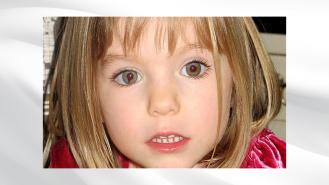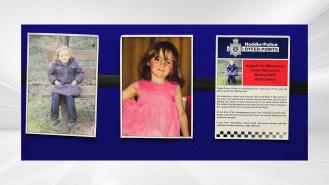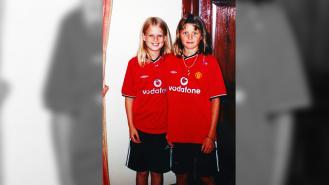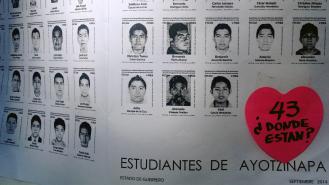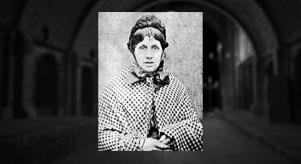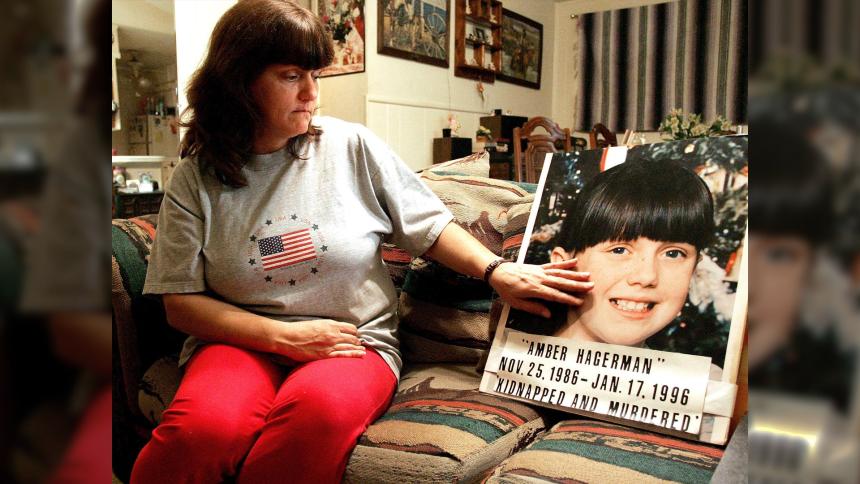
The case that inspired AMBER Alerts
AMBER Alerts
When a child goes missing, time is the most important factor. Each moment that passes decreases the likelihood that the child will be found safe because whatever evidence or clues there are to follow begin to disappear as time goes by.
It is essential to inform as many people as possible when a child goes missing. Each case is different, and in most instances, a child can and will be found safe or with a relative. But, in other cases, there is a far more tragic ending.
On January 13th 1996, Donna Williams brought her young children, Amber and Ricky Hagerman, to visit their grandparents in Arlington, Texas. 9-year-old Amber and her little brother 5-year-old Ricky asked if they could go out and ride their bikes. The neighbourhood was safe: Donna had often cycled around the same streets as a child and so she had no problem letting them go out, as long as they promised to say on the block.
Amber and Ricky decided to push the limit a little bit, as every child does. They continued cycling down the street to an abandoned Winn-Dixie grocery store, 2 blocks from their grandparents, Glenda and Jimmy Whitson’s home. There was an empty parking lot with space to ride their bikes, they found a cool ramp, it was exciting for the two of them.
Amber always called Ricky “Bubba” and he called her “Sissy”. The siblings got on well and Amber looked after Ricky, the way an older sister does. They played well together, especially enjoying riding around on their bikes. Amber loved to show off her skills, riding around with no hands on the handlebars and speeding passed her younger brother on her pink and white bike.
The siblings cycled around the empty lot for a while before Ricky started to get nervous about disobeying his mom and grandparents, and decided to go back home. He told Amber how he felt and that he was going to leave and go back. Amber was too busy playing to pay any attention to her little brother and said he could go back if he wanted but she wanted to keep cycling.
When Ricky arrived back at the house, the family asked him where Amber was, and he told them where they had been. Ricky was sent back to tell his sister to come home, but when he got there, Amber was gone.
Back at the house, Amber’s grandfather didn’t like knowing the children had split up, and although Ricky had been sent back to get Amber, Jimmie Whitson got straight into his truck and headed down to meet the children. By the time he arrived at the scene, just a couple of blocks from his home, the police had already arrived following a call made by a local man named Jimmie Kevil, a 78-year-old retiree. Mr Kevil had been in his garden across from where Amber was riding her bike when a dark coloured pick up truck pulled up. A man got out and he took Amber.
He described the abductor to police as Caucasian or Hispanic, aged in his mid 20s, with a dark coloured pickup truck, he thought it was probably black.
Mr Kevil saw the man pull the girl off her bike as she kicked and screamed, desperately trying to break free from the stranger’s arms. Amber was forced into the late-model pickup truck which drove off in a westerly direction. Amber had been gone from her house for just eight minutes.
Amber had been wearing pink jeans and a grey top with multicoloured hands printed all over it. Her brown hair was in a ponytail and her eyes were blue, she was 4 foot 11 and around 80lbs.
Detective Ben Lopez was one of the first officers assigned to the investigation. A special task force was set up to find the 9-year-old and locals were out en masse looking for Amber. Dee Anderson of Arlington Police Department said, 'It doesn’t sound like someone that the little girl knew or someone that she was going with voluntarily'. Amber's parents and relatives were quickly ruled out as suspects and the focus shifted to known sexual predators. Police chief David Kunkle said that the investigation team consisted of 8 FBI agents and 8 Arlington detectives who pursued hundreds of leads, but Amber could not be found.
They searched everywhere for her. Missing posters were put up and beautiful pink ribbons were attached to posts, trees and cars in support of the search for Amber. Strangers passed through the family’s home continuously, all present to help with the search and offer a prayer for Amber’s safe return. Amber was lovingly dubbed ‘Arlington’s Angel’.
Ambers mother, Donna, pleaded publicly for her daughters release on television. With the media constantly gathered outside their house, she took every opportunity to raise awareness, and to plead for her daughter to be returned safely home. But it was too late.
Just four days after Ambers abduction, her body was discovered. Badly bruised and bloodied, with no clothing left on her body except a small sock on her right foot, her throat had been slit. She had been found in a rain-swollen creek behind an apartment complex, around 4 miles from the parking lot she had been abducted from. There had been a thunderstorm the previous night that caused flooding, and Amber’s body was believed to have been swept there from the original place of disposal.
Donna was not able to say goodbye and pick up her child to hug her as 9-year-old Amber had almost been decapitated.
The autopsy showed Amber had been held alive for two days and was dead for around 48 hours at the time her body was discovered. The autopsy also indicated that Amber had been sexually assaulted during her time in captivity. She died from multiple stab wounds.
Amber's funeral was a packed, candlelit ceremony to remember the young girl. Balloons and fresh flowers were left at her resting place along with Disney balloons, including her favourite ‘Pocahontas’. White and pink balloons were released to the skies in her memory. Over 7,000 leads were followed, but the case went cold.
Within days of Ambers death, her mother Donna called for tougher laws governing sex offenders. Ambers parents soon established P.A.S.O (People Against Sex Offenders) and they gathered signatures hoping for more stringent laws to be established to protect children.
This idea of an alert to notify people about a child abduction was brought to life after a woman, Diane Simone, called into a local radio station KDMX/102.9. Diane explained how she had thought that if weather alerts exist when we should expect dangerous conditions or bad weather warnings, why don’t they implement the same thing for abducted children? It would ideally interrupt broadcasts in the same way. This idea took off when local broadcasters in the Dallas Fort Worth area partnered up with the local law enforcement to alert their viewers and listeners of child abduction.
That year 7 local radio stations helped to set up a local broadcast alert system. Over time the alert has been modified ensuring it’s used correctly. It may only be used for children under the age of 18, where police have confirmed an abduction has taken place and where there is reason to believe the child is in danger of serious physical injury.
This prompted the creation of the Dallas Amber Plan in 1997. In 1998 the Child Alert Foundation created the first fully automated alert notification system (ANS) to notify the surrounding communities when a child is reported missing or abducted.
The AMBER Alert – an acronym for America’s Missing: Broadcast Emergency Response, was created, a legacy of 9-year-old Amber Hagerman.
The AMBER alert proved itself to be lifesaving when just 16 months after its implementation Sandra Fallis, a babysitter who had been using drugs, disappeared with an 8-week-old baby. The AMBER alert was issued and the baby was reunited with their family just 90 minutes later. That baby was able to grow up and start college a few years ago, thanks to Amber.
In 2000 when the official Amber Alert program was created, around 240 children were saved from abductions. In 2002 highway signs began displaying AMBER alerts and led to the safe recovery of two teenage girls who had been abducted.
George W Bush signed the early warning system into law in 2003. The act was ‘The Prosecutional Remedies and Other Tools to end the Exploitation of Children Today’ known as PROTECT. It works to prevent child abduction and the sexual exploitation of children.
Every time Amber’s grandmother Glenda Whitson hears a child has been rescued thanks to the Amber Alert, she thanks her granddaughter for this. Over 1,000 children have been found in the United States as a direct result of AMBER alerts. Last year, 2020, saw the 1,000th child rescued as a result of an AMBER alert.
The alert has since prompted the creation of the UK Child Rescue Alert and other similar alerts worldwide.
When the alarm is correctly raised and law enforcement have determined the case fits the criteria, the authorities immediately notify broadcasters along with state transport agencies and the National Center for Missing and Exploited Children.
The alert will appear statewide; on transportation signs, digital billboards, interrupt television channels and even arrive as a text message on personal cell phones. It will read on a digital billboard above the road in clear precise terms such as ‘MAKE OF CAR, LICENSE PLATE, AREA’ etc
Abductors are more likely to release a child when they discover authorities have issued an AMBER Alert. The Hagerman family all naturally grieve for Amber still and hope that the person responsible for Amber’s murder will be brought to justice. It has been 25 years since Amber Hagerman was killed. On the 25th anniversary of Amber’s abduction, Arlington Police renewed their public plea for information. They also disclosed that they have DNA evidence. Advances in DNA technology in the past two decades have meant that previously unsolved homicides are being solved. A substantial cash reward is offered for information that leads to an arrest and conviction.
4 children saved by AMBER Alerts
The AMBER Alert was launched over two decades ago and has contributed to 1,127 children being returned home safely. Statistics from 2022 show that 74% of AMBER Alert cases were found within six hours and 93% within 24 hours. Here are some of the children who have been saved thanks to the system.
1. Rae-Leigh Bradbury
Rae-Leigh Bradbury was the first child saved by the AMBER Alert. In November 1998, Steve and Patricia Bradbury from Arlington, Texas left their two-month-old daughter in the hands of trusted babysitter Sandra Fallis.
The parents became concerned when Sandra had not returned their daughter by 6:30 pm as expected and the police were immediately called. After discovering Sandra had a history of drug use, the authorities considered that Rae-Leigh was in danger and issued an AMBER Alert.
Within half an hour of the AMBER Alert being issued, a motorist came forward and informed officers that the car described was in front of him on the highway. A police car pulled over Sandra’s 1993 turquoise Ford Ranger on Interstate 20. Rae-Leigh was found in the back seat unharmed but described as hungry and dirty.
Sandra Fallis was found guilty of kidnapping and sentenced to 10 years probation.
2. Ronnie Tran
In April 2015, 2-year-old Ronnie Tran was kidnapped along with his mother from their home in Des Moines, Washington by two women. When the mother came round after being tasered with a stun gun, she discovered she was tied up in a garage.
A man named John Tuong ended up caring for Ronnie after his sister claimed the child was her boyfriend’s son and that she would pick him up the following morning. At breakfast, John saw the AMBER Alert for Ronnie and realised the child was in his house. He immediately contacted the police and Ronnie was returned to his parents safely. The police arrested John’s sister in connection with the kidnapping, and Ronnie’s grandmother handed herself in to the police later that day.
3. Leah and Jordan Avila
An AMBER Alert was issued after three-year-old Leah Avila and her four-year-old brother Jordan Avila were kidnapped from their home in Houston, Texas.
According to the children’s father, Issac Avila, the children had been temporarily living at his mother's home. He described how his children were kidnapped by their maternal grandmother, Rose Mary Garcia, who overpowered his mother with the help of two accomplices, Andrea Alacrin and Lukel Evans.
The kidnappers are reportedly all related to the children’s biological mother, who was not believed to be involved. They had been travelling with the children in an RV, which broke down near Spring Cypress Road and I-45. Two Harris County Sheriff deputies assisted the motorists, unknowingly helping the kidnappers get back on the road.
Several hours later, the same officers recognised the stranded children they had just helped from an AMBER Alert. They immediately called the wrecker driver, who informed the officers that he had towed the RV to a nearby hotel. The trio were arrested and the siblings were safely returned home.
4. Bella Martinez
In February 2015, three-year-old Bella Martinez was in her father's car as he pulled into a 7-Eleven store in South Salt Lake, Utah. As the father got out of his car, he was approached by Rosealee Maria Key, who was riding a bicycle and asked him for a cigarette.
The father left his car running with Bella in the back as he walked into the store. In a matter of seconds, Roselee jumped into the car and drove off.
Leslie Fiet, the owner of a nearby cake store, got the AMBER Alert for Bella on her phone and spotted the black vehicle which had been stationary for a while. She went outside to inspect the car and noticed Bella sitting in the back seat. The quick-thinking business owner grabbed Bella, took her inside and locked the shop door whilst waiting for her parents to arrive.
Rosealee was arrested in Salt Lake City after her image and name were shared in the AMBER Alert.



